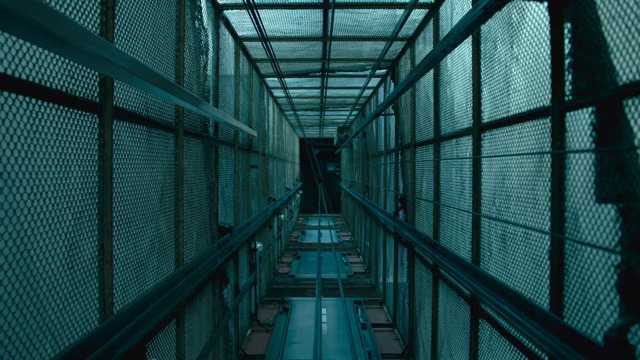Vladislav Knežević
Vladislav Knežević is an artist and director. Primarily involved with audio-visual experiments, he creates works using video material, digital photography, micro-animation, stereoscopic 3D techniques, and generated electronic sound in efforts to realise new experiences of viewing film media. The focus of his interests includes concepts that are related to marginalised categories of reality, the perception of new media images, digital aesthetics, utilitarian-fantastic constructs and the effects of technological-scientific research on human experience. Since 1988 he has been involved with experimental and artistic film, and his works have been shown at over 200 festivals and exhibitions in Europe, the United States, Australia, Japan and Brazil.








Works by Vladislav Knežević
Null Cone
2022, digital video
9 minutes
Integrating itself within the micro level of high-speed space dust particles, the nanogenerator is coding models, conjectures and possibilities. The process encompasses firmly elaborated scientific theses, doubts and phantasms, imaginariums and fringe discourses at different scales. The interior architectonics of pataphysical machine is scaled up from the nano level and is rendering emergence with its movements. The spiral rotation with variable speed within the particle simulates, but also potentially actualizes formation. The apex of the null cone represents a process of energy exchange in the form of photon absorption and emission. In the central point the observer is within the moment of now as an interactive part of creation with an emergent uncertain future. The film is not an attempt of scientific visualization, but rather an energy induced construct.
Imploder
2020, digital video
6.5 minutes
The central space of a residential building in Bauhaus style, with a lift well enclosed in industrial metal mesh, is primarily utilitarian and the construction is protective. The camera is fixed within the lift car and the extreme low angle shot opens up the perspective and the ambience of the five storey building. In radically altered circumstances dimensions start to merge, the object is morphing and it becomes a paradigmatic space of physical movement limitation. The process of iteration and gradual acceleration of a single shot creates perceptual distancing and induces an unsettling feeling of contraction. The reduced cinematic articulation functions as an imprint on the medium left by the psychosocial implosion during the lockdown regime.
End Cycle
2017, digital video
18 minutes
Utterly reduced movability and tension of a physical body set in an abandoned factory plant. In an empty machine-less space a human body is attuned to the working rhythm of archaic pulsation. Slow and hyper-controlled movements are trying to maintain cohesion, but the decay of upper layers indicates the unstoppable process of dematerialisation. Body positions point to the collective memory of physical structure of things disappearing in the intense cold of calculus. The traumatic position of corporeality is denoted in a circular, unstoppable motion towards a data conversion of the material world. Most of the sound in the video was the result of interventions on a sound recording of breathing during the performance without the presence of an audience. Choreography and performance by Takao Kawaguchi. Co-produced by Saison Foundation, Japan.
Binary Pitch
2013, digital video
7 minutes
In the geometry of a static shot, elements of architecture and space become the subject of a visual experiment. The video consists of three parts: activation (drawing the auditorium out) – coding (central part) – deactivation (drawing the auditorium in). The key notions from Max Bense’s text Aesthetics and Programming (1968) are coded in zeros and ones by way of an animation procedure of lifting and lowering the seats. This cryptic confession of the machine anticipates the virtual reality in which all communication is mediated by the sequences of bits. The auditorium composed of eight rows with 16 chairs depicts the field of articulation of a digital code. Architecture of the hall represents institutional surrounding, physical space and a place of establishing a relationship with the perception of space, time and film.
In the Colourbox
1989, digital video (original format: 16mm)
6 minutes
Film created with one 30-meter roll of Agfa material and 30-meters of blank. Basic animation with few frames shots. Scratched emulsion and coloured after the process of film development. Multichannel audio mix from different commercials created with a Tascam cassette recorder.
Psihogeneza
1988, digital video (original format: 16mm)
7 minutes
Shot on a Bolex H16 camera. Three expositions inside the camera. Coloured with Pantone markers. Sound originally recorded on a Tascam 4 channel cassette recorder. Magnetophone system used separately during film projection. Sound created with a bass guitar and a Boss effect processor.
